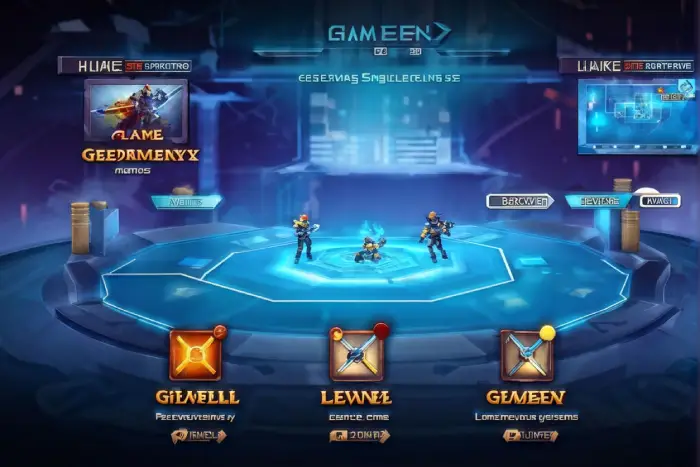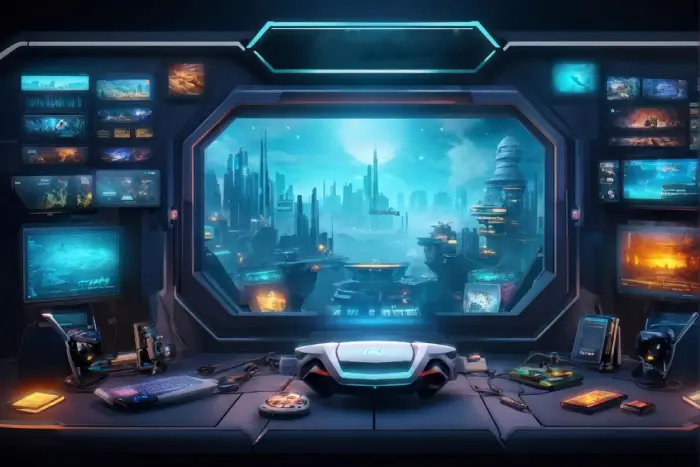Introduction
In the realm of video game development, understanding how to define gameplay video games is crucial. This process involves more than just creating entertaining levels. It requires a deep comprehension of player interactions, level design, and the integration of advanced technologies. As gaming evolves, new methods, such as procedural generation and deep learning, have emerged. These innovations enable developers to create dynamic and engaging levels automatically. By utilizing gameplay videos, designers can extract valuable data to enhance game experiences. This article delves into these advanced techniques, showcasing how they revolutionize game level creation.
Define Gameplay Video Games
To define gameplay video games, focus on mechanics, player interactions, and overall experience. Effective design engages and entertains players. Using technologies like procedural generation and deep learning, developers create dynamic levels. Analyzing gameplay videos offers insights into player behavior. This approach leads to more personalized and immersive games. Understanding these techniques is crucial for modern game development.
Understanding Game Level Generation
What is Game Level Generation?
Game level generation involves creating the stages or environments within a video game. It can be done manually by designers or automatically using algorithms. Moreover, automatic generation ensures unique and engaging levels each time a player interacts with the game.
History and Evolution of Level Design
Level design has evolved significantly over the years. Initially, levels were handcrafted, requiring extensive time and effort. However, with advancements in technology, procedural generation emerged, allowing for dynamic and varied levels. Today, deep learning and gameplay video analysis offer even more sophisticated methods for creating game levels. Consequently, these techniques enhance both efficiency and creativity in game development.

How to Generate Game Levels from Gameplay Video
Step-by-Step Process
Generating game levels from gameplay videos involves several steps. First, extract key features from the video, such as player movement and level layout. Next, use deep learning models to analyze this data and identify patterns. Then, design algorithms that recreate these patterns in new levels. Finally, test the generated levels to ensure they are engaging and playable.
Key Challenges and Solutions
There are several challenges in this process. One major challenge is accurately interpreting gameplay data from videos. To address this, advanced machine learning techniques are used to improve data extraction and analysis. Another challenge is ensuring the generated levels are fun and balanced. To overcome this, iterative testing and feedback loops are essential. Consequently, these solutions help in creating high-quality game levels from gameplay videos.
Gameplay Video Analysis for Level Design
Techniques for Data Extraction
Analyzing gameplay videos involves techniques like frame-by-frame analysis for capturing player movements and interactions. Machine learning algorithms are also crucial for identifying patterns such as enemy placement and item locations.
Importance of Accuracy
Accurate analysis of gameplay videos is crucial for creating engaging and balanced game levels. Precise data allows developers to understand player behavior and preferences, ensuring that recreated levels maintain the essence of the original gameplay and enhance the overall gaming experience. Therefore, investing in robust analysis methods is vital for successful level design.
Procedural Generation Techniques for Game Levels
Overview of Procedural Generation
Procedural generation is a technique where algorithms generate game content dynamically, rather than manually designing each element. This approach allows for infinite variations in game levels, enhancing replayability and reducing development time.
Benefits of Procedural Level Generation
The benefits of procedural level generation are manifold. Firstly, it enables developers to create vast, diverse game worlds without repetitive design efforts. Secondly, it enhances player experience by offering unique challenges in each playthrough. Lastly, procedural generation fosters innovation and creativity in game design, pushing boundaries beyond traditional static level designs.
Examples of Procedural Generation in Popular Games
Many popular games showcase the power of procedural generation. Games like “minecraft” use procedural techniques to generate expansive landscapes and caves, ensuring every new world feels fresh. Similarly, “Spelunky” utilizes procedural generation to create unpredictable levels full of traps and treasures, providing players with challenging yet exciting experiences. These examples highlight how procedural generation enhances gameplay variety and longevity in modern gaming.

Deep Learning for Game Level Creation
Overview of Deep Learning Techniques
Deep learning techniques have revolutionized game level creation. By using neural networks, developers can analyze large data sets to generate unique and engaging game levels. These techniques make it easier to create visually appealing and challenging environments. Transitioning to deep learning can significantly reduce development time and enhance creativity. Consequently, developers can focus more on gameplay mechanics and storytelling.
How Deep Learning Transforms Level Design
Deep learning transforms level design by automating the creation process. This allows for levels that adapt to the player’s style and preferences, creating a personalized gaming experience. Additionally, deep learning identifies successful design patterns, ensuring new levels are both high-quality and exciting. This transformation enables continuous innovation in game design.
Deep Learning for Game Level Generation
Detailed Explanation of Neural Networks and Algorithms
Neural networks and algorithms are crucial for game level generation. Training these networks on existing levels helps them learn key elements and design principles. For instance, convolutional neural networks (CNNs) analyze visual aspects, while recurrent neural networks (RNNs) focus on sequential elements. These algorithms work together to create engaging and coherent game levels.
Integrating Deep Learning with Video Analysis
Integrating deep learning with video analysis opens new possibilities for game level generation. By analyzing gameplay videos, neural networks extract data on player behavior and preferences. This data helps design levels that cater to different playstyles and skill levels. Moreover, video analysis reveals patterns and trends that might not be obvious otherwise. Consequently, the generated levels are more likely to resonate with players and provide an immersive experience.

Tools and Technologies
Best Tools for Game Level Generation from Videos
Review of Top Tools and Software
Reviewing the top tools for game level generation from videos is crucial for developers. Tools like GANPaint Studio, Unity, and Unreal Engine are prominent in this field. GANPaint Studio uses generative adversarial networks to create detailed game levels from videos. Unity and Unreal Engine offer robust frameworks for integrating video-based designs. Each tool has its strengths and weaknesses: GANPaint Studio excels in AI-generated details but lacks customization; Unity is versatile but complex for beginners; Unreal Engine delivers high-quality graphics but demands more system resources.
Pros and Cons of Each Tool
GANPaint Studio is excellent for detailed, AI-generated content but offers limited customization. Unity provides extensive support and versatility but can be daunting for new users. Unreal Engine is known for its stunning graphics and powerful performance but requires an advanced setup and consumes significant system resources. The choice of tool depends on the developer’s specific needs and expertise.
Video-Based Game Level Design
How These Tools Integrate with Video Analysis
Video-based game level design tools seamlessly integrate with video analysis. These tools analyze gameplay videos to extract valuable data for level creation. For example, DeepMind’s AI analyzes video frames to generate level structures. Tools like Levelhead use player feedback from videos to refine level design. This integration ensures that the generated levels are dynamic and tailored to player preferences.
Examples of Successful Video-Based Level Designs
Successful examples of video-based level design include games like “Mario Maker,” where user-generated content is inspired by gameplay videos. These tools ensure that levels are engaging and customized to players’ preferences. Another example is the use of DeepMind’s AI to create adaptive game environments based on analyzed gameplay footage. These examples highlight the potential of video-based level design for innovative and personalized gaming experiences.
Applications and Future of Game Level Generation
Game level generation has numerous applications in the gaming industry, allowing developers to create vast, dynamic worlds with minimal effort. This technology enhances replayability by generating unique levels for each playthrough and tailoring experiences to individual player preferences. In the future, game level generation will become even more advanced with AI and machine learning, enabling real-time adjustments based on player behavior. Deep learning will also allow for the generation of levels from gameplay videos, opening up endless possibilities for innovation. The future of game level generation promises to revolutionize game design, pushing the boundaries of creativity and delivering unparalleled gaming experiences.
Conclusion
In conclusion, game level generation is transforming the way we define gameplay video games. This technology allows developers to create dynamic, personalized, and engaging game environments with ease. By integrating AI and deep learning, the potential for innovation in game design is vast. These advancements promise to deliver more immersive and unique gaming experiences. As we continue to explore and refine these techniques, the future of video game development looks incredibly exciting.




